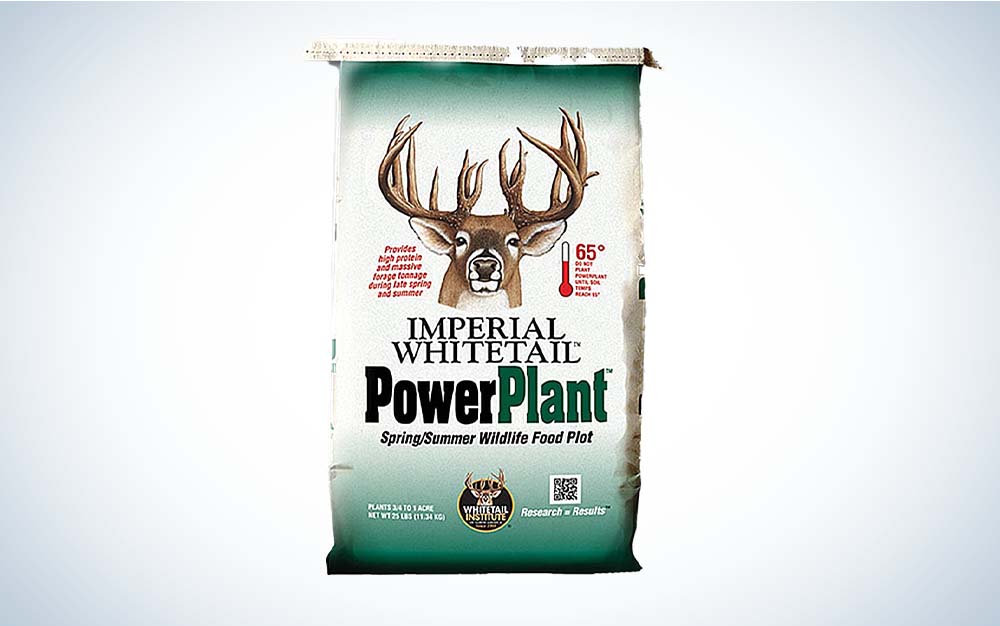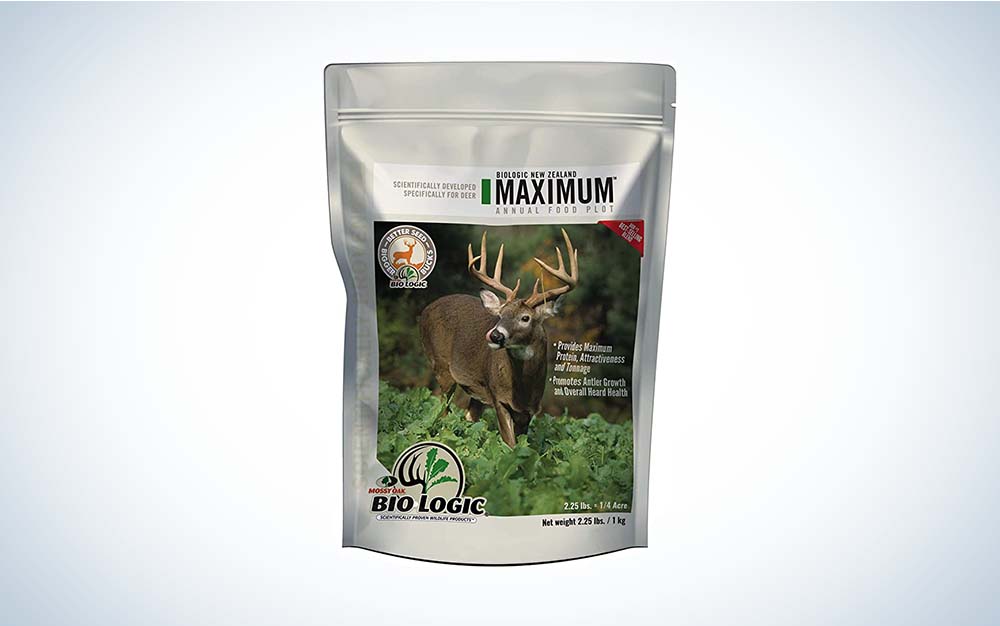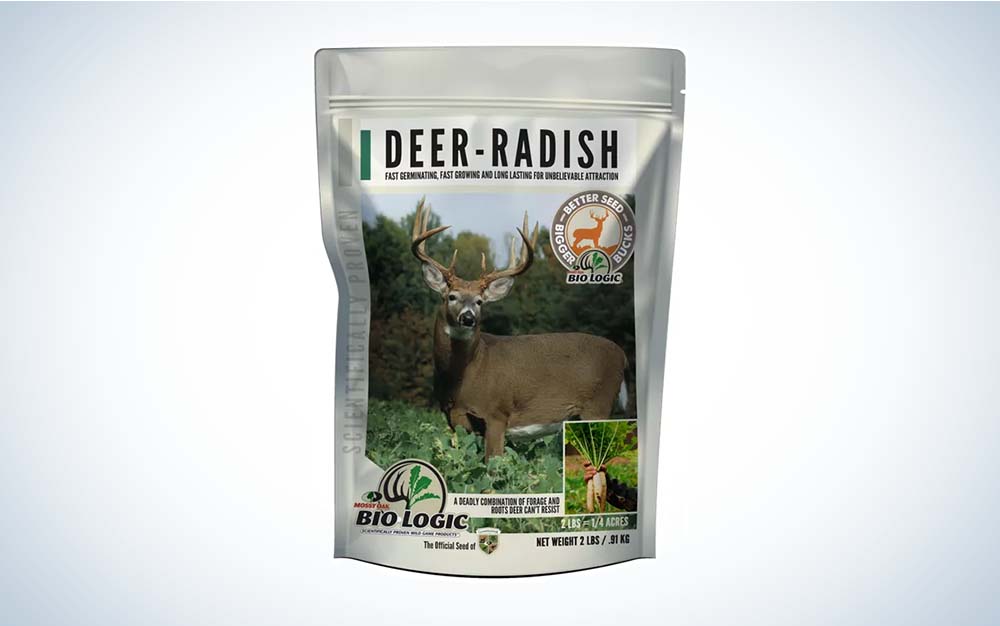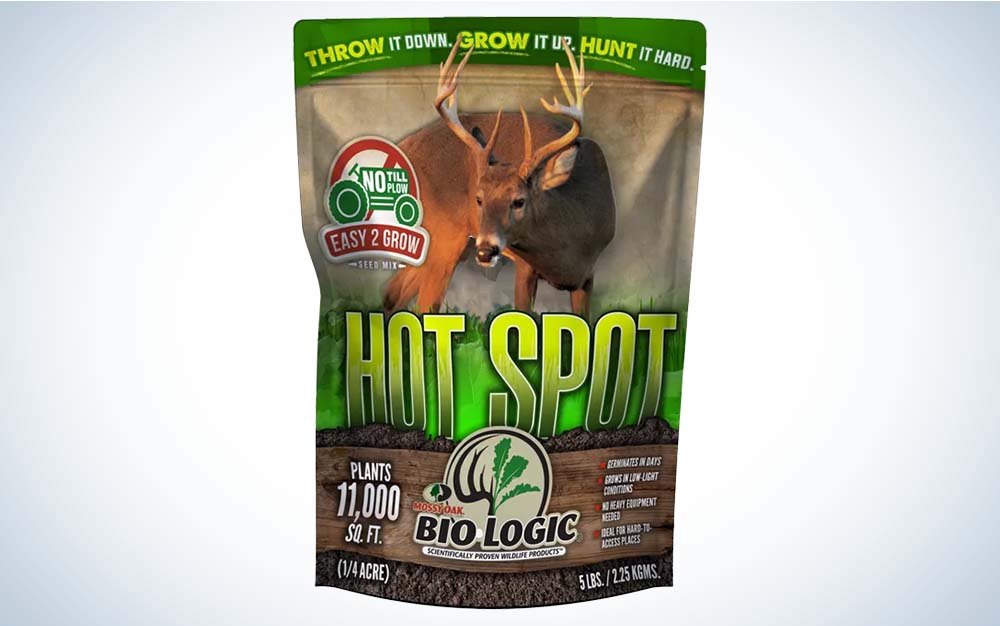We may earn revenue from the products available on this page and participate in affiliate programs. Learn More ›
Updated May 16, 2023 11:10 PM
Food plots for deer can benefit both the deer and the hunter. Some of my best memories of hunting season take place around a food plot. One year my son and I were hunting a food plot on the last afternoon of archery season. I knew a wave of orange would hit the woods the following day, so we had the added pressure of bagging a buck that evening. We watched several does and fawns feed across the food plot early that afternoon, and then the action died for the next few hours. With 10 minutes of shooting light left on the clock, we caught movement to our left. A quick glance with my binos confirmed it was a shooter worthy of my boy’s tag. Eventually working within 20 yards of our blind, the buck finally presented a broadside shot, and I gave my son the green light. One perfect shot later and we had our hands on a “man-sized” 8-point buck.
That food plot attracted and held does which gave us the perfect opportunity to punch a tag on a mature buck. If you’re looking to maximize your shot opportunities, you’ll need the best food plots for deer for your specific time of year and region.
Best Food Plots: Reviews and Recommendations
Best for Fall: Whitetail Institute Imperial Clover
Key Features
- Extreme cold tolerant
- Drought resistant
- Lasts up to five years
Pros
- Seed readily available
- High in protein
- Grows most anywhere
Cons
- May not truly thrive until second season
- Requires off-season maintenance and mowing
If you plan to hunt early season deer, clover can be a great option for deer who haven’t fully transitioned from their summer feeding habits, especially once it’s established. Imperial Whitetail Clover has an extremely high protein content for antler, muscle and bone growth. It also thrives in extreme cold, which makes it a great option for northern states, as well as warm, dry climates thanks to its disease and drought resistant qualities. It’s also coated with RainBond for seedling survivability.
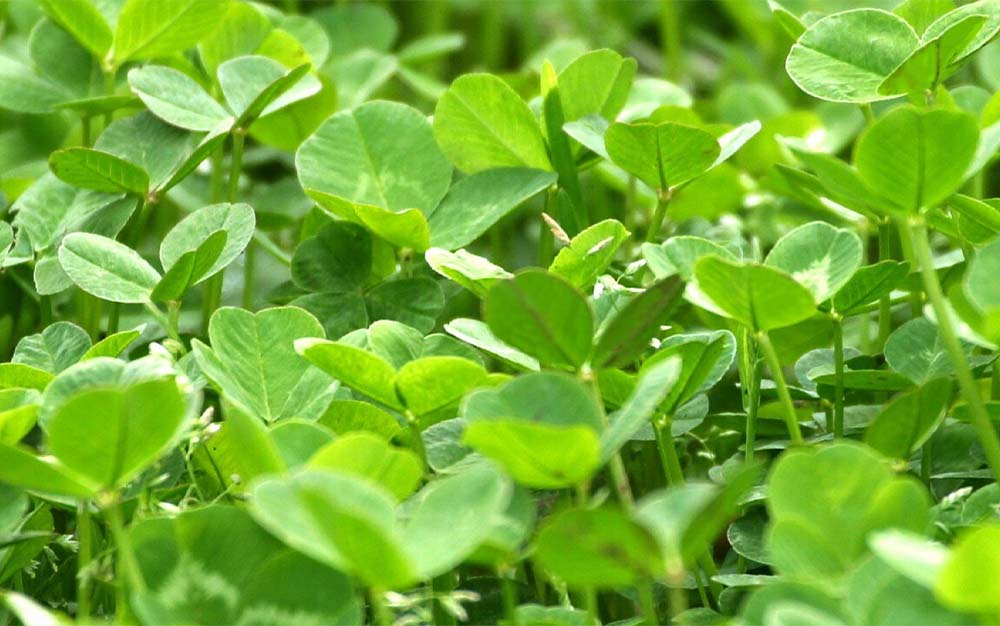
With routine maintenance, a food plot with clover can last up to five years or more. It’s essentially the all-terrain-vehicle of the food plot world. It will grow just about anywhere. I’ve even found it growing in the bed of my truck where I spilled some seed on old dirt and mulch. You can plant it in the spring or fall but will likely see best results the following spring after planting. One four-pound bag plants up to half an acre.
Best for the South: Whitetail Institute PowerPlant
Key Features
- Quality protein
- Adds nitrogen to soil
- Handles heavy browsing
Pros
- Highly palatable to deer
- Great warm weather option
- Grows well with minimal moisture
- Provides great cover for deer
Cons
- Can be more expensive
- Requires more equipment for planting
- Typically requires more acreage
PowerPlant provides deer with ample protein during the long spring and summer months of the south, and it handles heavy grazing. In fact, it continues to grow as deer feed on it. The blend consists of vining forage soybean, peas, sunn hemp, and sunflowers to assist in maximum growth.
Aside from the incredible drawing power and nutrition, this seed serves as cover for your deer herd, thanks to plants growing well over six-feet tall. Deer will find plenty of security and shade living in and around this food plot. Plant at a rate of 25 pounds per acre in the spring when soil temperatures reach a constant 65 degrees.
Best for the Midwest: Mossy Oak Biologic New Zealand Maximum
Key Features
- Easy growth
- Early attraction for bow season
- Nutrients help with soil maintenance
Pros
- Cost effective planting option
- Grows in a variety of soil types
- Maximum forage in smaller plots
- Tolerates cold, hot, and dry weather
Cons
- Requires crop rotation every couple years
The name says it all. You get maximum forage with this brassica option, which produces anywhere from 10-15 tons of forage per acre. The yield, attractiveness, and nutritional value make this a fantastic option for hunters and land managers. It grows in a variety of soil types and keeps the groceries stocked for your deer all season long.
The brassica in this blend mature at different rates to provide highly palatable forage for the entire life of the plot, particularly after the first frost when sugars flow from the roots to the leaves. Plant Maximum in late summer to fall at a planting rate of 2.25 pounds to one-fourth of an acre.
Best for the Late-Season: Mossy Oak Biologic Deer Radish
Key Features
- Easy establish contents
- High tonnage ratio
Pros
- Great for small plots
- Deer feed on leaves and bulb
- Maximum attraction for the late season
Cons
- Not the most attractive for early season
- Requires frequent crop rotation
Want every deer in the neighborhood on your property in the late-season? Radishes can help make that happen. They have incredible drawing power in the later months of hunting season, and Biologic’s Deer Radish is hard to beat. Deer crave this highly nutritious forage, as well as the sweet roots. From top to bottom, this Deer Radish planting is 100-percent consumable.
Deer Radish grows in a variety of soil types with adequate soil moisture, and you can plant it by itself or with other seed blends for early season attraction. Though it works best as a late-season alternative. Regardless, this is one of the best food plots to draw deer for extended periods of time throughout hunting season. Plant in late summer to early fall at a rate of two pounds to one-fourth of an acre.
Best No-Till: Mossy Oak Biologic Hot Spot
Key Features
- Quick grow option
- No tilling required
- High protein concentration
Pros
- No big equipment or tilling required
- Fast yield
- Provides deer a variety of feeding options
- Great last-minute option
Cons
- Might not last as long as other food sources
No farming equipment? No problem. Hot Spot works perfect for small, hidey-hole food plots or micro-plots and allows you to plant without big equipment. Clear the ground with a rake to ensure seed-to-soil contact to get this plot started, and it’s good to go. It’s perfect for remote stand sites where using equipment isn’t feasible.
Hot Spot contains a blend of wheat, deer radish, rye, and rape that germinates fast and easy (usually within a week of planting), which allows you to draw deer to your plot in no time. Plant Hot Spot in late summer to early fall at a rate of five pounds to one-fourth of an acre.
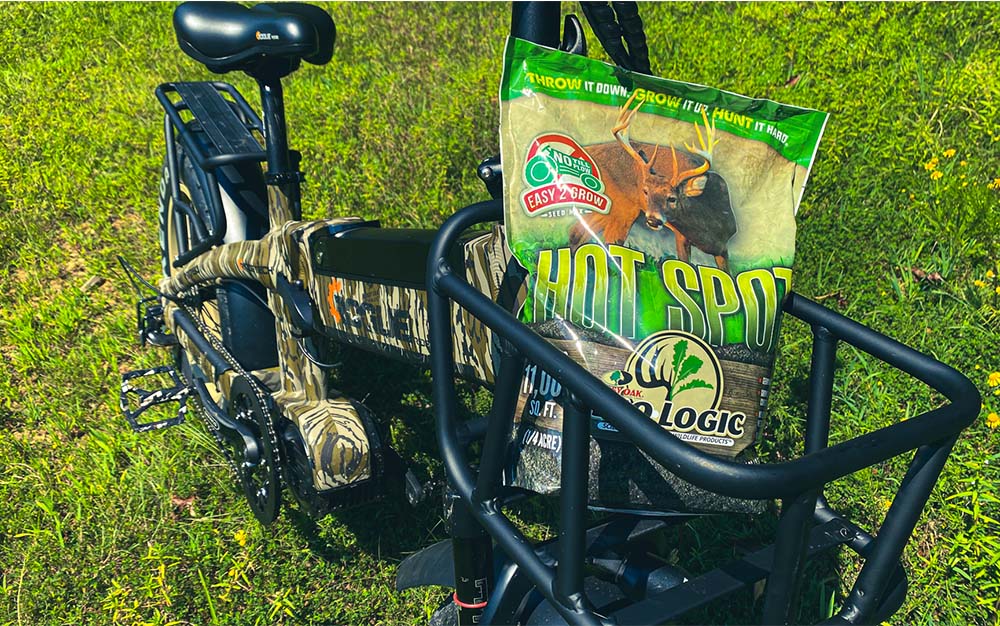
FAQs
Q: What’s the best food plot for antler growth?
Bucks need protein for antler growth, and they’ll find it in high-protein forage such as legumes. Soybeans and clover, in particular, can provide as much as 30-35 percent of protein for deer.
Q: What is the best fertilizer for food plots?
The best fertilizer needs depend on the type of food plot you’re planting, but generally, a 0-20-20 fertilizer works best for legumes, and 15-15-15 fertilizer works for most everything else (brassicas, cereal grains, etc).
Q: When is the best time to plant a food plot?
The best time to plant a food plot is in spring or fall, depending on the crop and when you want the best forage results. Soybeans, peas, sunn hemp, and sunflowers can be planted in the spring, while brassicas, oats, turnips, and radish should be planted in the fall. You can plant clover in the spring or fall.
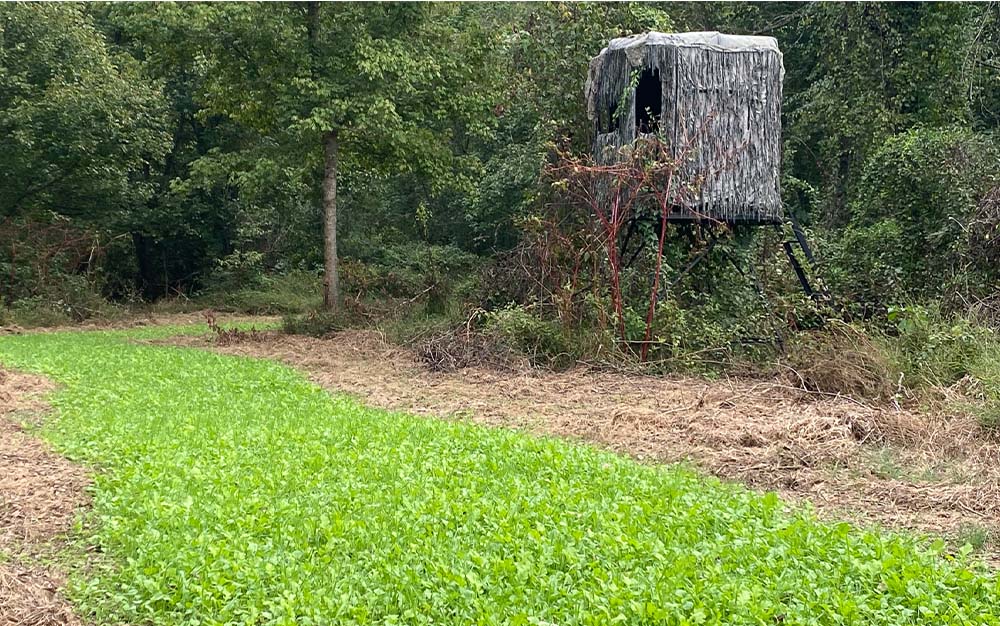
Food Plot Tips for Beginners
Growing successful food plots doesn’t have to be complicated, but there are a few tips that can help eliminate a lot of the guesswork.
- Take a soil test for your potential plot
- Don’t underestimate the need to lime and fertilize your plot
- Consider herbicides for weed control
- Always follow recommended planting rates and dates
- Fight the urge to spread extra seed—overcrowding will stunt growth
- Rotate brassicas every two years
- Plant products like Biologic Hot Spot No-Till or Imperial No-Plow in small plots with minimal equipment
Things to Consider Before You Plant a Food Plot
Not all food plots are created equal. You’ll rarely find a one-size-fits-all approach when it comes to them. That’s why it’s important to consider food plot size, timing, and what you can realistically plant with the equipment you have.
Size
Depending on the tract of land you have access to hunt, as well as the terrain features, you may have limited or limitless plot size options. Your budget will also determine the size of the food plot you can plant as well. Larger food plots will cost more. Smaller ones will cost less.
Timing
The timing of when you plant and hunt makes a huge difference. Just because you get your seed in the dirt, doesn’t mean you’ll reap the full benefits this season. If you plant too early or too late, you might even kill or delay your efforts.
Also, some food plots thrive in the early part of the season, while other options like clover are extremely cold tolerant and can handle the frigid temps of the late season. If you hunt in colder regions, having a high-protein food source on your property during that late season can help keep the deer on your side of the fence.
Equipment
Do you have the tools and equipment to till and plant a food plot, or will you be looking for a no-till option with minimal equipment?
Final Thoughts on the Best Food Plots
Food plots are not the end-all means for success this deer season. While there are plenty of myths about food plots, they should certainly be a part of your land management plan. They can be as simple or complex as your time allows, like a small kill-plot or a large destination food source for deer throughout the entire season.
The name of the game with whitetail hunting is creating opportunities. Put the time, energy, and effort into the best food plots for deer this season, and watch new opportunities abound for both you and the bucks you pursue.

